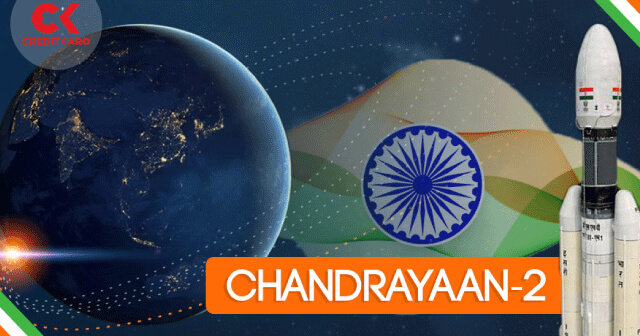CHANDRAYAAN -2

Posted by Creditkaro
On 12th November 2007, representatives of the Indian space and research organization (ISRO) and Russian Federal Space Agency (ROSCOSMOS) signed an agreement of working together on the project Chandrayaan-2. The responsibilities were divided as such that ISRO would have the prime responsibility for the orbiter and rover, while ROSCOSMOS would provide the lander. This mission was approved by the government of India in a Union Cabinet meeting chaired by then Prime Minister Manmohan Singh on 18th September 2008. The design of the spacecraft was finalized in August 2009 with scientists of both countries giving a go ahead after a joint review.
Even though ISRO finalized the payload for the project as per schedule, the mission had to be postponed on January 2013 and rescheduled to 2016 because Russia was unable to develop the lander in the given time frame. When Russia quoted its inability to provide the lander even by 2015, ISRO decided to develop the lunar mission independently.
This is the story of our one of the most historic expeditions into the lunar space which took place on July 22nd, 2019 at 9:13 on its first operational flight after so much delay and rescheduling. The primary objectives of chandrayaan-2 are to demonstrate the ability to soft land on the lunar surface and operate a robotic rover on the surface. The scientific aim behind this mission included studies of lunar topography, mineralogy, elemental abundance, the lunar exosphere, and signatures of hydroxyl and water ice. The orbiter is supposed to orbit the moon at an altitude of 100 km. The approximate launch mass was 2,379 kg.
Chandrayaan 2 is a lunar mission that will explore where no other country has ever gone before – the moon’s south polar region. Through this effort, the aim is to improve our understanding of the moon and making discoveries that will benefit India and humanity. These experiences and knowledge gathered will help us set a pattern on how lunar expeditions are approached for years to come so that we are ready for further explorations into the farthest frontiers in the future.
The Moon is the closest cosmic body where space discovery can be ventured and documented. It is also considered to be a positive test arena to demonstrate the range of technology required for deep-space missions.
Chandrayaan 2 will attempt to strengthen the advancement of technology, the understanding of space, new discoveries and to inspire a new generation of scientists and astronauts.
The curiosity about the lunar south pole is high because the lunar surface area here remains in shadow is much larger than the north pole. There is a possibility of the presence of water in permanently dark areas around it. The south pole also has craters that are cold traps and contains a fossil record of the early solar system, moreover no country has ever attempted or succeeded in venturing the south pole, so we are also the first country to do so.
1st space mission to conduct a soft landing on the moon’s south polar region
The GSLV MK-III is India’s most powerful launcher till date and has been designed and fabricated from within our country. This launcher chosen to launch chandrayaan-2 spacecraft, is a three-stage heavy lift launch vehicle developed by ISRO. It is designed to carry 4-ton class of satellites into Geosynchronous transfer orbit (GTO) or about 10 tons of low earth orbit(LEO) , which is about twice the capability of GSLV MK-II.
The orbiter will observe the lunar surface and relay communication between Earth and chandrayaan 2’s lander – Vikram, named after the renowned scientist, physicist and astronomer Dr. Vikram Sarabhai.
Chandrayaan 2’s rover is a 6-wheeled robotic vehicle is named Pragyan, which translates to ‘wisdom’ in Sanskrit. This rover is 27kg in weight and can generate up to 50W of electric power. It can travel up to 500 m (1/2-a-km) and leverages solar energy for its functioning. It can only communicate with the lander.
India has taken many such steps in the past to display to the world that we as a country can achieve a lot more than the world can imagine. The launch of chandrayaan-2 was one of such steps in human history when, India displayed sheer hard work, dedication, perseverance to accomplish the unthinkable to the whole world. We are almost 2 days away from the 73rd Independence Day, so we thought you might like to puff out your chest with pride recollecting an historic event as this. We at Creditkaro love creating more such interesting content for you, so we invite suggestions on what you want to read or know about so that we can do this forever! Feel free to write to us, and keep coming back to CreditKaro .
Till then happy buying!
Category
Recent Post
Archive